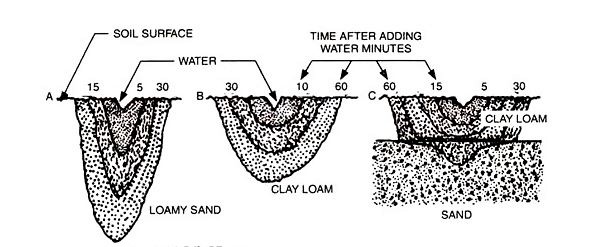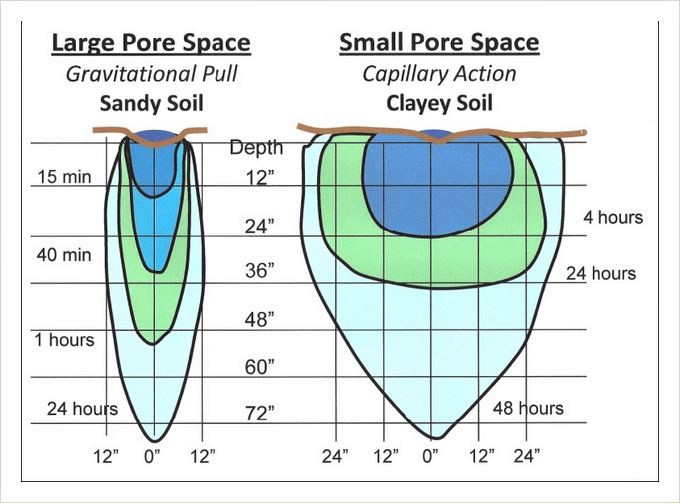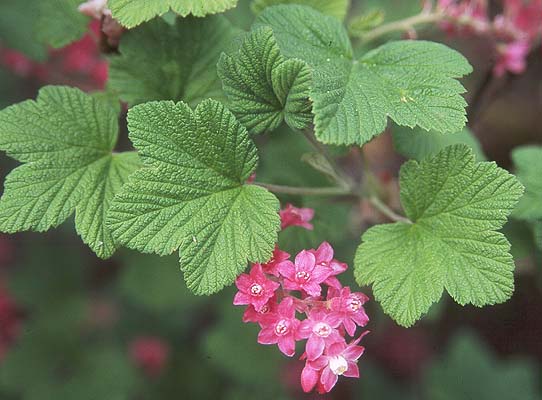With Claudia Groth
Monthly Archives: April 2020
Pollinator and Gardens
https://media.oregonstate.edu/media/t/1_tnnu0mkn
Websites and publications mentioned in ‘Enhancing Urban and Suburban Landscapes to Protect Pollinators’ webinar:
Oregon State Bee Keepers Association Swarm Call
https://orsba.org/swarm-call/
Nurturing Mason Bees in Your Backyard in Western Oregon
https://catalog.extension.oregonstate.edu/sites/catalog/files/project/pdf/em9130.pdf
Shrubs for Fall and Winter Bloom
https://catalog.extension.oregonstate.edu/sites/catalog/files/project/pdf/em9277.pdf
Pollination Podcast
http://blogs.oregonstate.edu/pollinationpodcast/
Oregon Bee Atlas Outreach Materials
https://extension.oregonstate.edu/bee-atlas/outreach-materials
Horticultural Updates April 2020
By Margaret Bayne, OSU Extension Staff-retired, OSU Master Gardener
NEW PUBLICATION- “Trees and Shrubs for Fall and Winter Bloom 28 Species Attractive to Pollinators and People West of the Cascades.” (Neil Bell, Heather Stoven, Andony Melathopoulos, OSU-EM9277) https://bit.ly/38IGgbw

REVISED PUBLICATION– “Managing Diseases and Insects in Home Orchards.” (J. W. Pscheidt, et al; OSU- EC631) https://bit.ly/2v9vmhd
NEW PUBLICATION– “Kabocha and Butternut Squash for Western Oregon Gardens.” (Alice Formiga, et al, OSU-EM9270) https://bit.ly/2VYmFS1
Bent into shape: The rules of tree form. “How do trees find their sense of direction as they grow? Researchers are getting to the root, and the branches, of how the grandest of plants develop.” (Rachel Ehrenberg, knowablemagazine.org) https://bit.ly/2Iy7lUj
Ants produce antibiotics that may protect plants. “The antimicrobial compounds ants excrete to defend themselves from pathogens may protect plants as well.” (Emily Makowsk, the-scientist.com) https://bit.ly/3cHrqp3
Scientists just solved the strange case of pine trees that always lean towards the equator. (Signe Dean, sciencealert.com) https://bit.ly/2TCV3jN

Bright yellow spots help some orb weaver spiders lure their next meal. “Bees and moths appear strongly attracted to the markings on the arachnids.” (Yao-Hua Law, sciencenews.org) https://bit.ly/2TIfZpH
Potting soil poison. “Gardeners often struggle to grow plants in containers. You may feel that you have a really black thumb at times when newly planted seedlings fall over dead or fail to thrive. The problem may not be disease or poor gardening acumen but rather your container media otherwise sold as “Potting Soil”. (Jim Downer, gardenprofessors.com) https://bit.ly/38Csyqv
Rise and shine-NASA mission captures aerial view of plants waking. “We aren’t the only lifeforms hitting the snooze button.” (Passant Rabie, inverse.com) https://bit.ly/337lpxh
VIDEO: NASA is ready to send more plants and a new way to handle seeds to the International Space Station. (NASA’s Kennedy Space Center via youtube.com) https://bit.ly/2TSJhAB
Prescribed burns benefit bees. “Freshly burned longleaf pine forests have more than double the total number of bees and bee species than similar forests that have not burned in over 50 years, according to new research from North Carolina State University.” (Elsa Youngsteadt, et al, NCSU) https://bit.ly/38HckMZ
Stunning! Colored micrographs magnify pollen seeds, plant cells, and leaf structures in photographs by Rob Kesseler (Grace Ebert, thisiscolossal.com) https://bit.ly/2TIyRVD

Pollinating opossums confirm decades-long theory. “In Brazil there is a plant so strange that researchers predicted — and 27 years later, proved-that opossums are key to its pollination.” (Ecological Society of America via sciencedaily.com) https://bit.ly/2TYgGtG
When good seeds go bad: How long can you store seeds? “While there isn’t a date where all the seeds go bad, they will eventually go bad over time. Why is this? And how can I make sure to use my seeds before they’re gone?” (John Porter, gardenprofessors.com) https://bit.ly/2W0QjGd
VIDEO: Story of flowers, a breathtaking botanical animation.(thekidshouldseethis.com via youtube) https://bit.ly/39Gsyr4
Invasive plant look-alikes! (Fate Syewoangnuan, greenseattle.org) https://bit.ly/38IiZq6
Drip/Soaker Irrigation
Natter’s Notes
Jean R. Natter, OSU Master Gardener
Many gardeners are trying to be environmentally sensitive in various ways, in particular, trying to conserve water use in the garden. Often, an in-ground sprinkler system (or hose-end device) is forsaken on behalf of soaker hoses or a drip sytem. Unfortunately, the entire project can go south in a hurry. Plants don’t thrive; some become puny, others wilt, and still others die.
Rather than explaining how to install a drip system, I’d rather discuss the guiding principles one must adhere to if the system is to be successful. In other words, if the gardener intends to obtain the abundant yield s/he expects. So, consider starting your first installation with a kit; it will contain all the needed parts and clear directions how to hook them up. Or, if you’re determined to dive in and set up everything from the start, you might want to obtain an instruction text or a manufacturer’s booklet, the latter often free at retail outlets, located with the irrigation supplies.
The important principles
Oh, yes. Here’s an overriding principle, whatever your method: On an individual dripline, always use component parts from the same brand because, unfortunately, one brand’s half-inch, etc., isn’t necessarily the same as another brand’s.
Disasters can be avoided by understanding a few basic principles, perhaps the most critical of which include the following:
– Output of an in-ground sprinkler system is gallons per minute.
– Output of a soaker or drip system is gallons per hour.
– Therefore, a drip system must run much longer than a sprinkler sytem to adequately supply plants.
– A drip system will put out uniform amounts of water per hour if pressure-compensated drippers are used.
– Further, it’s important that a drip line is on its own valve, not combined with sprinklers. To convert a sprinkler system to drip, all heads must be either changed to drip or capped off.
Soaker hoses
With soaker hoses, the output is inherent in the product. Output will be the same the length of the hose as long as it is on level ground and the water pressure is only sufficient to make the hose sweat. If a soaker hose sprays, the plants at the far end of the hose will receive less water than those at the beginning. Then, too, the hose may burst. (The exceptions are hoses which are designed to spray.)
Even though soaker hoses aren’t pressure-compensated, gardeners can gain that advantage from a commercially available plastic drip hose which has built-in pressure-compensated drippers at specified intervals. (Just make certain the intervals match the spacing for the plants at hand.)
Watering principles
These principles concern the plants and planting media:
– At sunrise, a plant’s root system should be fully moist and ready to meet the day. With elevated temperatures, stomates close; water uptake slows and may stop.
– Whenever you water, moisten the entire rootzone. In general, rootzones for seasonal vegetables and flowers go to 10- to 12-inches deep, trees and shrubs to 18 inches.
– As a vegetable ages from seedling to maturity, its root sytem gradually enlarges, both deep and wide. Irrigation frequency and duration must also increase. Similarly, with young trees, as the years go by, the number of drippers must increase, as must duration of irrigation.
– Water movement in soils (and container mixes) relies on pore size: The bigger the pores the better, and faster, the drainage.
The larger the soil pores, the more rapidly water moves. Sandy soil has large soil pores and must be watered frequently to maintain moisture within the rootzone. (It’s very similar with potting mixes.) In contrast, the small pores of clay limit water penetration; several on-off cycles may be required to moisten the roots and avoid surface runoff. Over all, the same amount of water is required for both kinds of soils.


When water is applied as a point source, as in drip irrigation, it moves downward and laterally, according to the basic characteristics of the soil. In sandy soils and potting mixes, water moves downward in a narrow profile. The much smaller pores of clay soil results in a shallow but broad profile. Such profiles mean that more drippers are needed per unit area of sandy soil than in clay-based soils. (Source: “Drip Irrigation for the Yard and Garden”)
Questions and answers
Q: How long should I water?
A: Long enough to moisten the entire rootzone; on average to about a foot deep. To know for certain, go outdoors, stick a trowel in the soil or potting mix, and look.
Q: How often should I water?
A: Often enough to maintain moisture throughout the rootzone, thereby avoiding wilt. To know for certain, go outdoors, stick a trowel in the soil, and look.
(A vegetable that wllts won’t be able to produce the abundant yields it could otherwise. This is true in spite of the plant’s apparent recovery after you dashed over to water it.)
Q: Is it true that a drip system is 90 to 95 percent efficient?
A: It might be that efficient; the answer is to moisten the entire root system but to avoid excessive runtimes such as 24 or 48 hours.
Fun for gardeners: Run a watering test.
Each gardener must determine for his/her own soil runtime and frequency for their own soil. And realize that it varies among containers, raised beds, and inground plantings. Run the drip system for an hour, stop for an hour, then check the soil with a trowel. How deep and wide did the water go?
Resources
– How-to booklets from suppliers available at retail outlets with drip irrigation supplies
– “Drip Irrigation for Every Landscape and All Climates” by R. Kourik (2nd edition; Metamorphic Press)
– “Drip Irrigation in the Home Landscape” – University of California; 2015
– “Drip Irrigation for the Yard and Garden” R. Troy Peters, Ph.D. WSU http://irrigation.wsu.edu/Content/FAQs-Tutorials/Basics-of-Plant-Soil-Water-Relations-Tutorials.php#irrigationScheduling
April 2020

Everything that slows us down and forces patience, everything that sets us back into the slow circles of nature is a help. Gardening is an instrument of grace. – May Sarton
With well wishes to you and yours!
During this challenging time, the metro area Master Gardener program reaches out with wishes for health and wellness to you and yours! Although so much of life seems to be upside-down right now, we can find comfort doing what we love to do – gardening! As Master Gardeners, we certainly recognize that gardening is an act of optimism that can bring solace in a time of uncertainty.
Get your hands into the soil, sow a seed, plant a seedling, harvest a bouquet of early spring bloomers, plan your summer vegetable garden, and watch the dandelions unfurl!
OSU Extension Resources Support Gardeners
OSU Extension Service offers a wealth of resources to support Master Gardeners and all those seeking to successfully and sustainable garden at home. Here are a few great resources for you to share with your family and friends who are hunkering down at home.
An Educators Guide to Vegetable Gardening
https://beav.es/4f3
FREE Through April – Master Gardener Online Short Course – Vegetable Gardening Series
https://beav.es/4fU
Gardening with Kids
https://beav.es/4fw
How to build your own raised bed cloche
https://beav.es/4NB
Nurturing Mason Bees in your Backyard in Western Washington
https://beav.es/4f5
To peruse a wide array of OSU Extension Service gardening focused publications go to: https://extension.oregonstate.edu/gardening
Master Gardener Volunteer Activities Suspended
As announced in March, due to the evolving COVID19 situation, all Master Gardener volunteer activities are cancelled or postponed until further notice. This includes all Master Gardener clinics (phone, Farmers Markets, and special events), classes, workshops, demonstration gardens, Speakers Guild presentations, fundraisers, and in-person meetings/lectures/speakers. In addition, our Spring Recertification event scheduled for Saturday, May 16, is cancelled.
OSU Extension Service is working to make communities safe. As OSU provides more guidance in coming weeks, we will provide updates.
With the cancellation of volunteer activities, and knowing the many challenges people are facing, we are waiving volunteer requirements for 2020. When volunteer activities resume, we encourage those who volunteer, to report any volunteer hours served this year, by September 30, 2020.
We encourage Master Gardeners to take advantage of the many online continuing education opportunities. Updates will be sent via email and/or posted in this monthly newsletter.
Delve Deep Into Insect Agroecology

Would like to delve deeper into the study of entomology? Dr. Gail Langellotto, professor, Oregon State University, and Statewide Master Gardener Program Coordinator has offered a wonderful continuing education opportunity for OSU Master Gardeners.
Gail has made recordings of her Entomology/Horticulture (Insect Agroecology) University course available for Master Gardeners to view. This class delves into ecological theory, and considers how this theory applies to the design and management of sustainable agroecosystems.
To view the lectures use the links below.
Note: you can toggle your view of the lecture by using the arrows on the screen (top right corner) to adjust from either, a larger view of the presenter, or of the slide presentation.
Oregon State University – ENT/HORT 444/544 (Insect Agroecology)
Lecture 1: The Importance of Insect
Diversity:
https://media.oregonstate.edu/media/t/0_yqb73rzq
Lecture 2: Bottom Up Regulation of
Herbivores (Plant Nutrition):
https://media.oregonstate.edu/media/t/0_wkovk0un
Time spent viewing the lectures counts as continuing education hours for perennial Master Gardeners.
Gardening with Native Plants and the Oregon Flora Project

The 2020 Master Gardener Advanced Training Webinars continue on Tuesday, April 21, at 11am, highlighting native plants and the Oregon Flora Project. Join Dr. Linda Hardison, as she focuses on how to integrate native plants into your home garden. Dr. Hardison will also introduce resources behind the Oregon Flora Project, sharing a sneak peek at the new Gardening with Natives web portal. Register for the live webinar at: https://beav.es/4NL A recording of the webinar will be posted a few days following the webinar.
To view past webinars, go to: https://beav.es/44T All Master Gardener Advanced Training webinars can be counted as 1-hour of continuing garden education credit.
2020 In-class Training Wraps-up Online!
Our 2020 Master Gardener training was a great 6 and 1/3 week run! Our instructors guided our new class of trainees, covering many key sustainable gardening concepts and practices. In response to the COVID-19 crisis and following University direction, we made the necessary pivot to offer the remaining training classes on-line via Zoom. Trainees have had the opportunity to delve into care of landscape ornamentals, and tree fruits to complete their required hours of in-person instruction.
We greatly appreciate the flexibility and continued enthusiastic engagement of trainees, as we changed course in the interest of the well-being of all.
With the suspension of volunteer activities, we look forward to our 2020 trainees beginning their volunteer internship when Master Gardener in-person activities resume.
Utmost Thanks to Our Stellar Instructors!
Our Master Gardener training offers the best in solid, research-based horticulture curriculum thanks to the knowledge and generosity of our instructors! We extend our sincere thanks to all of our instructors, for educating and inspiring our 2020 Master Gardener trainees and perennial Master Gardeners. We are grateful to our instructors for the time they spent preparing, teaching and engaging all who attended the classes. Thank you!
- Neil Bell
- Chip Bubl
- Sally Campbell
- Amanda Davis
- Brooke Edmunds
- Claudia Groth
- Monica Maggio
- Heather Stoven
Thanks also to Margaret Bayne and Jane Collier for preparing to present their great hands-on, plant problem diagnostics training for the final week of class and to Jean Natter for preparing her informative household pests presentation!
Hearty THANKS, to Our Class Coordinators!
“Wisdom is knowing what to do next; virtue is doing it.” – David Starr Jordan

There is no doubt we have a wise and virtuous team of volunteer coordinators for our three Master Gardener training venues! We give a big shout out of thanks to Louise Gomez-Burgess and Marti Farris (Hillsboro class), Cindy Manselle (Oregon City class), and Beven Peters (Portland class); who along with their supportive team of volunteer’s displayed beyond measure dedication that made for a very successful Master Gardener training!
Many thanks also, to our AV teams for keeping the audio and PowerPoints going! Larry Schick and Marty Royster (Hillsboro), Laura Huckaba (Oregon City) and Rich Becker (Portland).
Each volunteer team attended to the biggest and tiniest details to ensure a successful training and a welcoming venue for the new trainees. Thanks for compiling, hauling, setting-up, announcing, assisting Interns, spreading out the amazing hospitality tables, and cleaning up the last crumb before turning off the lights. We are grateful for your generous commitment, assistance and attentiveness!
Special thanks to Marilyn Frankel for lifting, packing and hauling PNW books across county lines!
Deep gratitude to our supporting Chapters!
Thank you to the Clackamas, Multnomah and Washington County Chapters for their financial support of the Metro MG training classes. The facility, hospitality and parking fees would prohibit training happening in such great venues. Thank you for your constant and generous support of the OSU Metro Master Gardener training program. Your contributions make such positive and vital difference to the Master Gardener program!
April Garden Checklist
Here are some great home gardening projects, in our April ‘Garden Checklist’ video.

